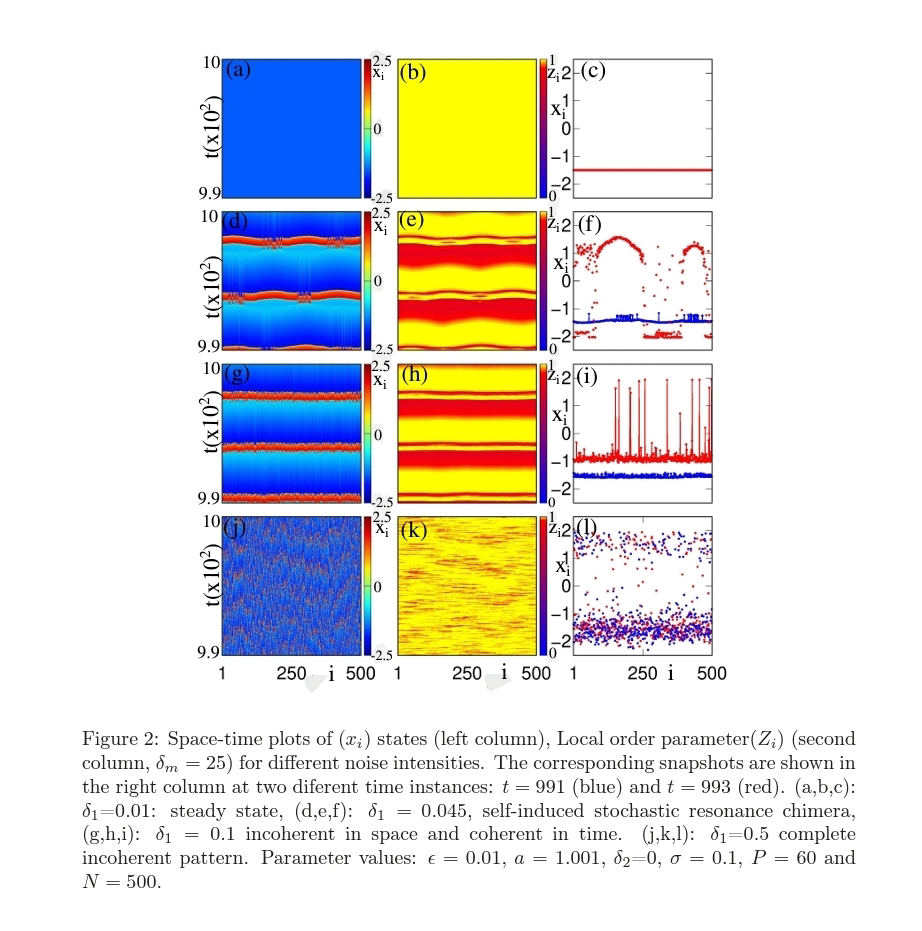<< Swarmalators are phase oscillators that cluster in space, like fireflies flashing on a swarm to attract mates. >>
<< In this work, (AA) explore the effects of disorder induced by phase frustration on a system of Swarmalators that move on a one-dimensional ring. >>
They find << numerically and analytically, the ordered and disordered states that emerge in the system. The active states, not present in the model without disorder, resemble states found previously in numerical studies for the 2D Swarmalators system. One of these states, in particular, shows similarities to turbulence generated in a flattened media. (AA) show that all ordered states can be generated for any values of the coupling constants by tuning the phase frustration parameters only. Moreover, many of these combinations display multi-stability. >>️
Joao U.F. Lizarraga, Marcus A.M. de Aguiar. Sakaguchi Swarmalators. arXiv: 2305.08615v1 [nlin.PS]. May 15, 2023.
Also: 'swarm', 'turbulence', 'noise', 'particle' in: https://www.inkgmr.net/kwrds.html
Keywords: gst, swarm, turbulence, noise, particle

